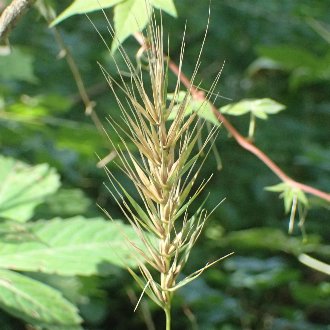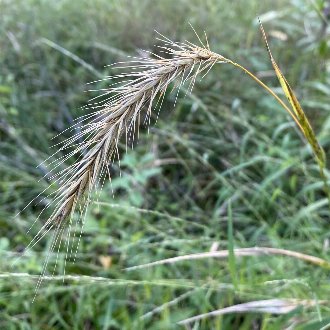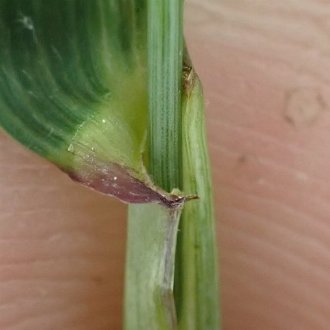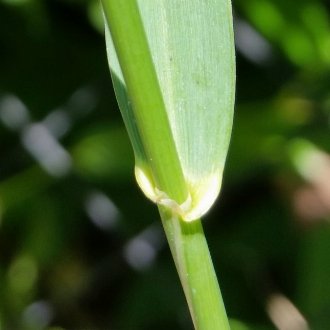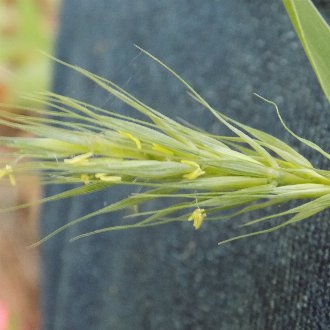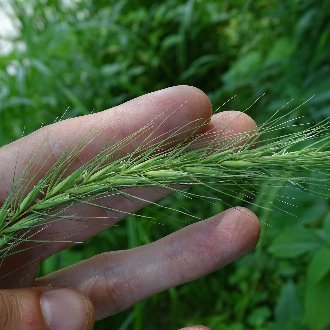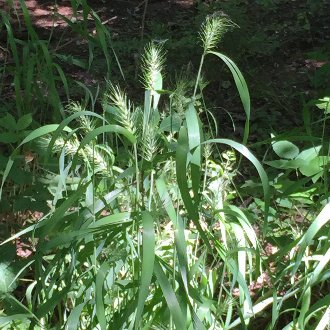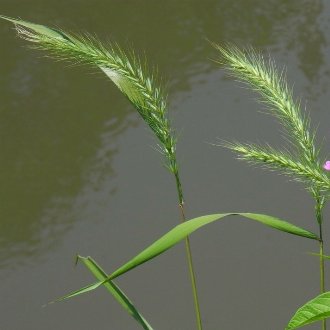Early Wildrye vs Riverbank Wildrye
These two species can be confused as both can be glaucous and occur in moist bottomland woods. They are usually distinguished by spikes and bloom time. Although their habitats overlap, E. riparius ranges farther north and is more likely on alluvial soils and the lower portions of floodplains, often growing directly up to the water's edge, whereas E. macgregorii ranges farther south and west, is restricted to well-drained sites with deep, calcareous soils, and ventures into mesic upland woods.
Early Wildrye (Elymus macgregorii) | Riverbank Wildrye (Elymus riparius) |
A perennial cool-season bunchgrass native to eastern North America, found in moist-to-mesic forests on deep, calcium-rich soils. | A perennial, cool-season bunchgrass native mostly to northeastern North America, typically found in riparian areas. |
Spikes are usually upright and average much shorter (4-12cm) although with some overlap. Photo © Yann Kemper, Public Domain. | Spikes always lean or droop, and average much longer (7-25cm) although with some overlap. Photo © Henry Frye, Public Domain. |
Auricles (clasping outgrowth where leaf blade meets the stem) are always present, larger (2-3mm), and usually bold purplish-black, occasionally light brown. Photo © John Abrams, CC BY 4.0. | Auricles may be absent, smaller (0-2mm) when present, and average a lighter color, usually not as bold purplish-black. Photo © Zihao Wang, CC BY 4.0. |
Much earlier bloom period, mid-May to mid-June in most of range. Usually no overlap in bloom periods. Photo from May in Texas. Photo © Blake Bringhurst, CC BY 4.0. | Much later bloom period, late June-late July in most of range. Photo from early August in Ontario. Photo © Reuven Martin, Public Domain. |
Limited to well-drained portions of floodplains and also ventures into mesic upland sites. Photo © Ken Kneidel, Public Domain. | Found in moister habitats, usually growing directly in alluvial soil, often growing right up to the edge of a river or stream. Photo © mjpapay, CC BY 4.0. |
References & External Resources
These short lists show only links helpful for ID. For a complete list of references and resources also covering other aspects of ecology, visit the links section of the full article on each plant, which is the first entry here.



